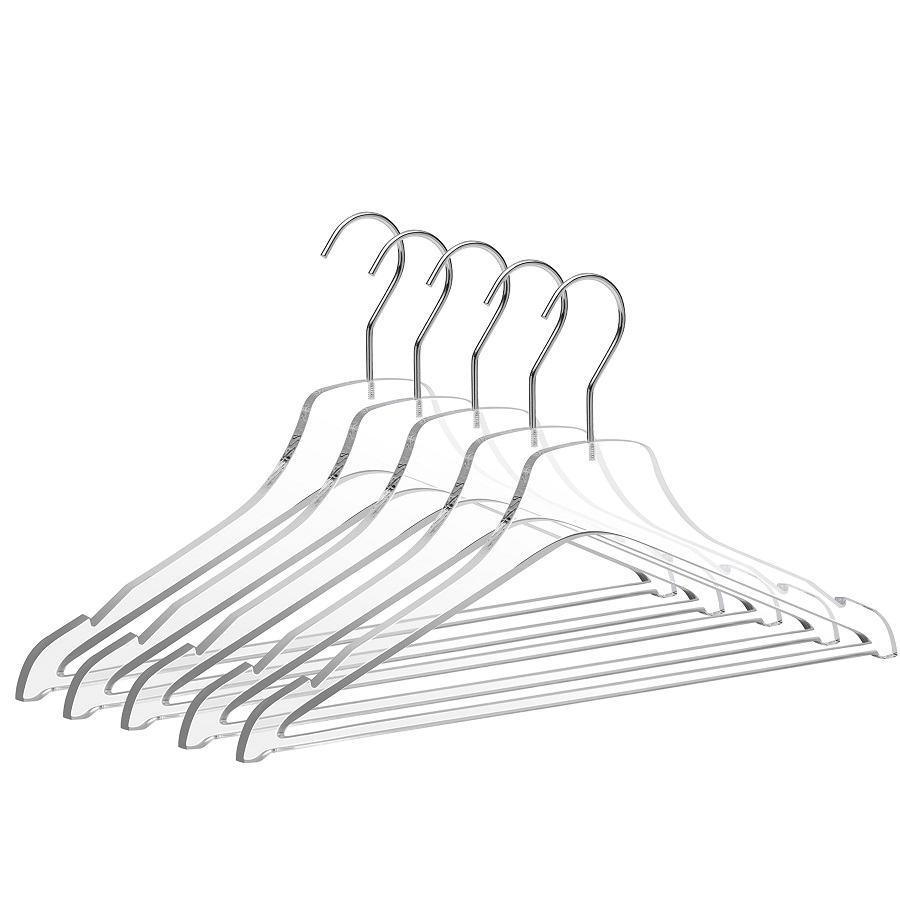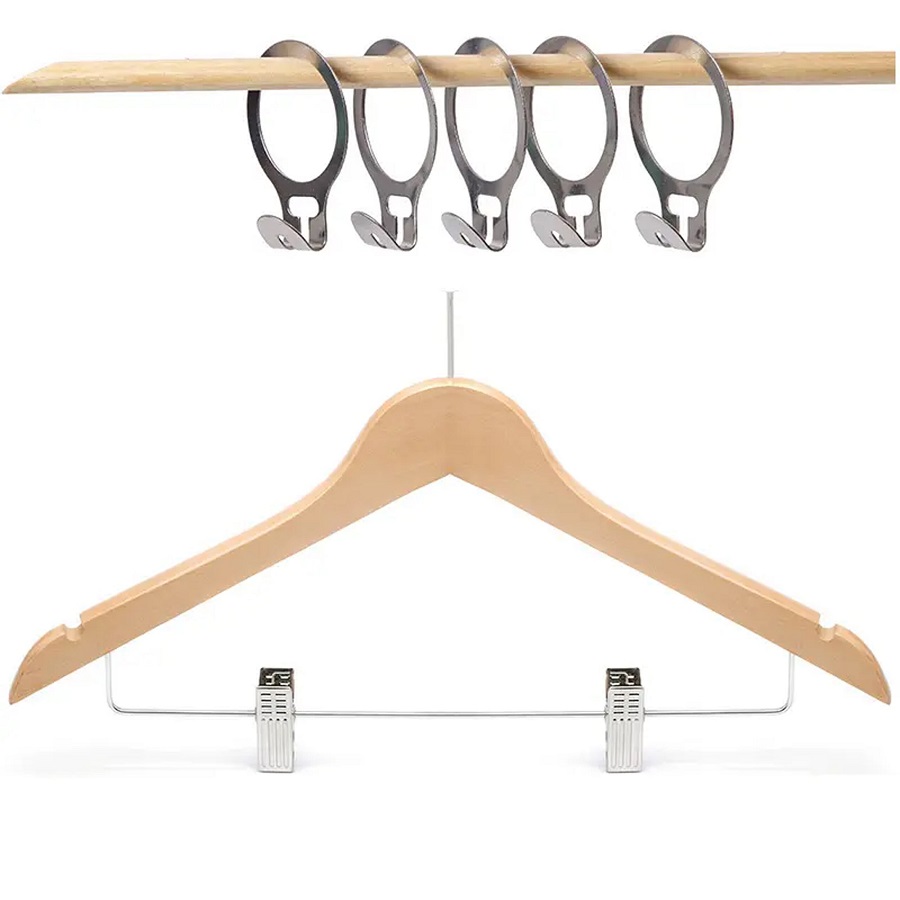Importance of Proper Sweater Storage
How to hang a sweater on a hanger – Storing sweaters correctly is crucial for keeping them in top shape. It helps maintain their form, texture, and overall appearance. When you hang sweaters properly, you prevent the fabric from stretching. This can happen with improper storage methods. Good sweater storage also keeps away creases and wrinkles. This makes sure your sweaters are ready to wear whenever you need them.
Sweaters are prone to damage from pests, moisture, and light. Correct storage shields them from these hazards. It extends the life of your sweaters and saves you money in the long run. To master how to hang a sweater on a hanger, start with the basics. Learn about different sweater materials and their needs. Then, choose hangers that match those needs. Finally, follow a clear guide for hanging your sweaters. We’ll cover all these topics in the sections to come.
Remember, what works for one type of sweater might not work for another. That’s why we’ll also look into the specific care requirements of different materials. Whether it’s cashmere, wool, or cotton, each has its way of hanging. Stay tuned as we explore how to keep your sweaters looking their best. x
x
Different Types of Sweaters and Their Care Requirements
Sweaters come in various materials, each with unique care needs. Understanding how to cater to each sweater type will ensure they last longer and stay in great condition. When it comes to hanging sweaters, knowing the material is half the battle. Let’s dive into the specifics for different types of sweaters.
Cashmere Sweaters
Cashmere is luxurious and delicate. Treat these sweaters with extra care. To hang a cashmere sweater on a hanger, gently fold it over the bar. Never hang it by the shoulders as this could lead to stretching. Cashmere is prone to pilling, so hanging it correctly helps minimize this issue. Store away from direct light and avoid crowded spaces which can lead to wrinkles.
Wool Sweaters
Wool is resilient but can lose shape if not stored properly. With woolen sweaters, use wide-shouldered hangers to distribute the weight evenly. This prevents distortion of the shoulders. Wool needs to breathe, so ensure there’s space between hangers in your closet. Wool sweaters are also sensitive to moths, so consider cedar blocks to keep pests at bay.
Cotton Sweaters
Cotton is more forgiving but can still stretch if not handled well. When learning how to hang a cotton sweater on a hanger, look for padded hangers to provide soft support. Cotton usually tolerates folding and stacking, but for heavier knit cotton sweaters, hanging is best to avoid creasing. Keep them in a dry environment to prevent mildew growth.
Each sweater type offers its comfort and style. Proper care and knowledge on how to hang a sweater on a hanger will maintain their shape and texture. In the next sections, we’ll highlight the right hangers for each and tips on the hanging process itself.
Choosing the Right Hanger
Choosing the right hanger is key to preserving your sweaters. The right hanger will support the sweater’s weight without misshaping the shoulders or stretching the fabric. When selecting hangers, it’s essential to match the hanger type to the sweater’s material and weight.
Wooden Hangers
Wooden hangers are sturdy and offer great support for heavier sweaters. Look for hangers with wide shoulders. They distribute the sweater’s weight evenly. This is vital for heavy knits and wool sweaters. Wooden hangers also hold their shape over time. They won’t bend or warp under the weight. Wood is a natural material, adding a touch of elegance to your closet. These hangers suit wool and other heavy materials best.
Padded Hangers
Padded hangers are perfect for delicate materials like cashmere and fine cotton. They have a soft cover, usually made of satin or foam. This padding prevents indents from forming in the sweater’s fabric. Padded hangers also offer a gentler grip on your clothes. This helps keep delicate knits in their original shape. They’re ideal for lighter sweaters and those with detailed knit patterns.
When you know how to hang a sweater on a hanger, you are set to keep them looking fresh. Wooden or padded, the right hanger can make all the difference. In the next section, we’ll walk through the correct folding techniques. This will ensure even the heaviest sweater hangs just right.
 Step-by-Step Guide to Hanging Sweaters
Step-by-Step Guide to Hanging Sweaters
Properly hanging sweaters is crucial for keeping them in top shape without stretching or distorting the fabric. Whether you’re dealing with cashmere, wool, or cotton, the way you hang your sweaters can significantly affect their longevity and appearance. Here is a clear, step-by-step guide that covers essential techniques such as folding and placing the sweater on the hanger, ensuring every sweater hangs perfectly in your wardrobe.
Folding Techniques
Folding your sweater correctly before hanging is essential. Start by laying the sweater flat on a surface. Smooth out any wrinkles with your hands. Next, fold the sweater vertically so the sleeves lay along the length of the body. For thicker sweaters, gently roll from the bottom up instead of folding to avoid creases.
For delicate materials like cashmere or fine cotton, use a minimal fold or roll to prevent pressure points that can distort the fabric. After folding, carefully lift the sweater ensuring it maintains its shape before placing it on the hanger.
Placement on the Hanger
After folding the sweater, the next step is placing it on the hanger correctly. For sweaters that have been folded, lay the folded or rolled sweater over the hanger’s bar. Guarantee the hanger does not protrude through the sweater, which could cause marks or bulging.
For heavier or larger sweaters, ensure the hanger you use is supportive enough to hold the weight without bending. Place the sweater centered on the hanger to maintain a balance that prevents it from slipping off. Always verify that the hanger fits the size and type of the sweater; a mismatch can lead to misshaping. Remember, mastering how to hang a sweater on a hanger is essential for wardrobe management and garment care.
Avoiding Common Mistakes
When you learn how to hang a sweater on a hanger, avoiding common errors is key. This section will explore frequent mistakes and how to avoid them.
Stretching the Fabric
One major mistake is accidentally stretching the sweater fabric. This often happens when using unsuitable hangers. Ensure the hanger fits the sweater’s size and material. Avoid thin wire hangers which can stretch the fabric at the shoulders.
Hanging Without Folding
Another mistake is hanging sweaters without folding them first. This can cause the fabric to lose shape. Always fold heavy sweaters before placing them on the hanger. This helps distribute the weight evenly.
Using Damaged Hangers
Using damaged or inadequate hangers can harm your sweaters. Check hangers regularly for any sharp edges or signs of wear. Replace them if necessary to avoid damaging your garments.
By steering clear of these common mistakes, you can keep your sweaters in excellent condition. Properly hanging your sweaters not only keeps them looking great but also extends their lifespan.
 Additional Care Tips for Sweater Longevity
Additional Care Tips for Sweater Longevity
Keeping your sweaters looking like new needs more than just proper hanging methods. Here are extra tips that can help prolong their lifespan.
Avoid Overwashing
Sweaters don’t need a wash after every wear. Overwashing can cause pilling and wear out the fabric. Wash only when necessary, and always check the care label for instructions.
Proper Drying
Never hang sweaters to dry as it may stretch them out. Instead, lay flat to dry away from direct heat or sunlight. This helps maintain the shape and quality of the sweater.
Use Gentle Detergents
Harsh chemicals can damage sweater fibers over time. Choose mild, gentle detergents for washing. Avoid bleach or fabric softeners that can break down the yarns.
Storage
During off-seasons, store sweaters in breathable bags or containers. This protects them from dust and moths while allowing air circulation. Make sure they’re clean before storing to prevent stains from setting in.
Regular De-pilling
Pilling is common with frequently worn sweaters. Use a fabric comb or shaver to remove pills gently. Be careful not to snag or pull the threads.
Monitor Closet Conditions
Keep your closet cool and dry. Excess moisture can lead to mildew, and heat may cause fibers to break down. Use dehumidifiers or maintain proper ventilation to manage the environment.
By incorporating these additional care tips, you can ensure that each sweater stays comfortable and beautiful for seasons to come. Remember, sweaters are an investment, and with the right care, you can maximize their wear and enjoyment.


